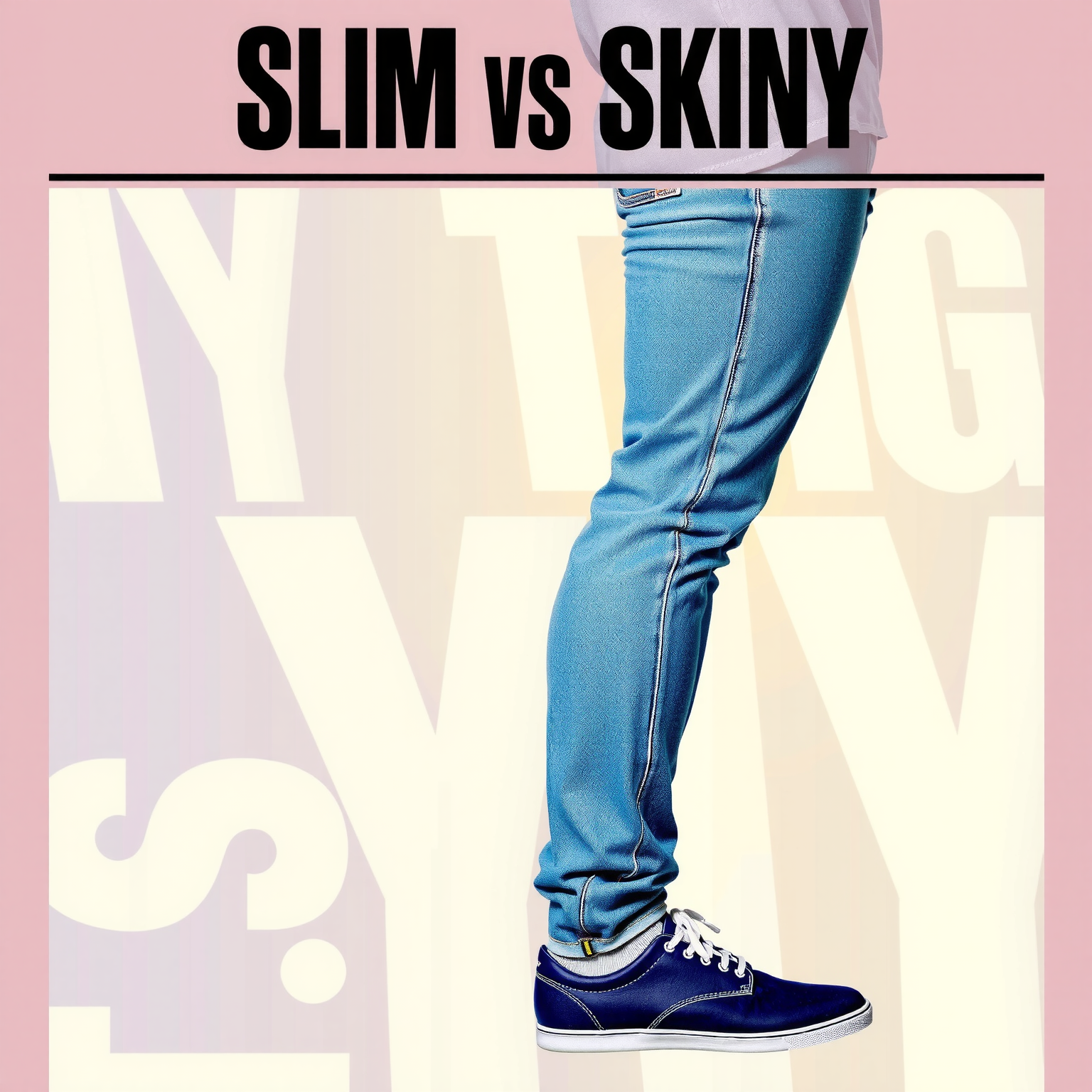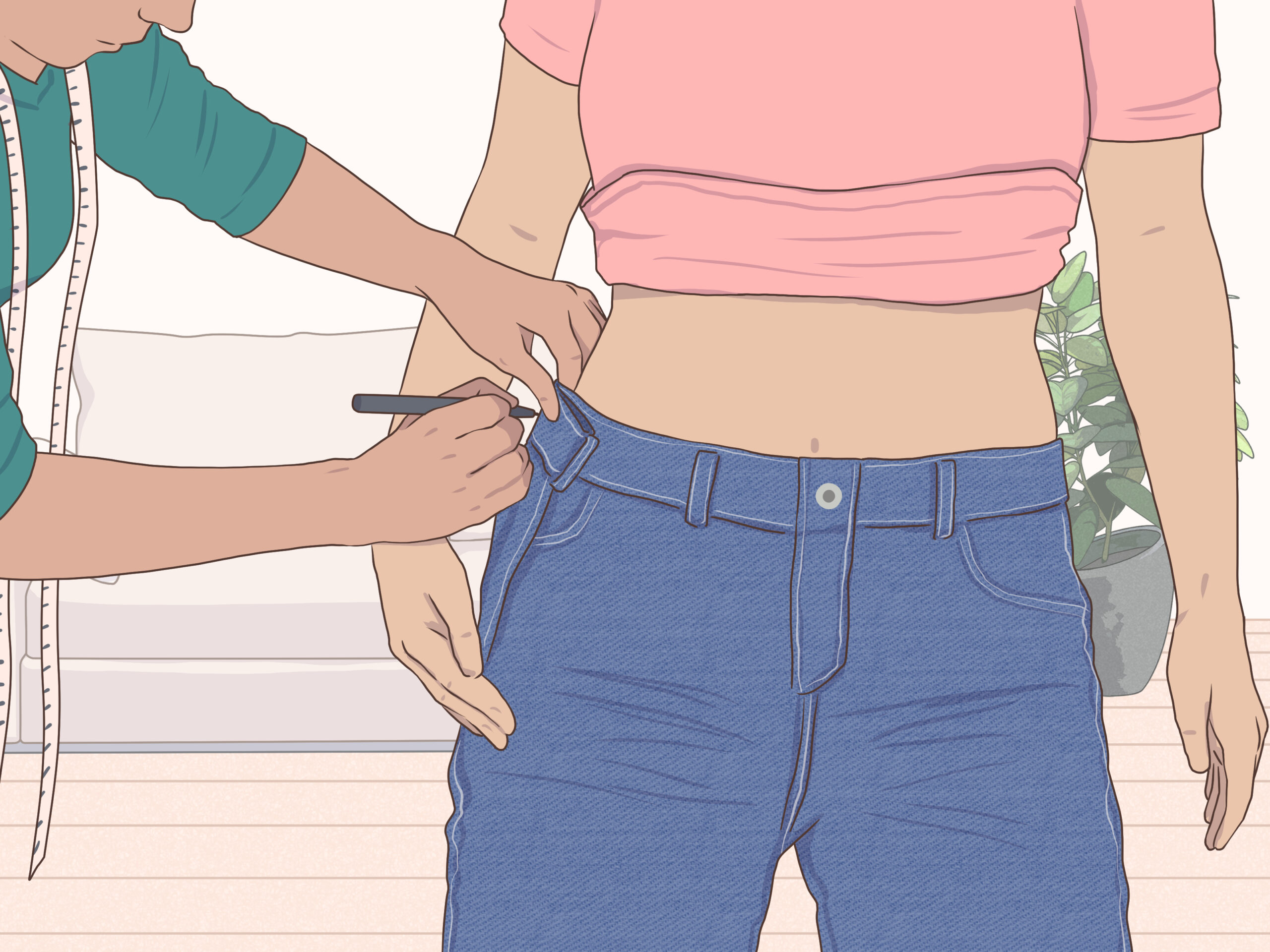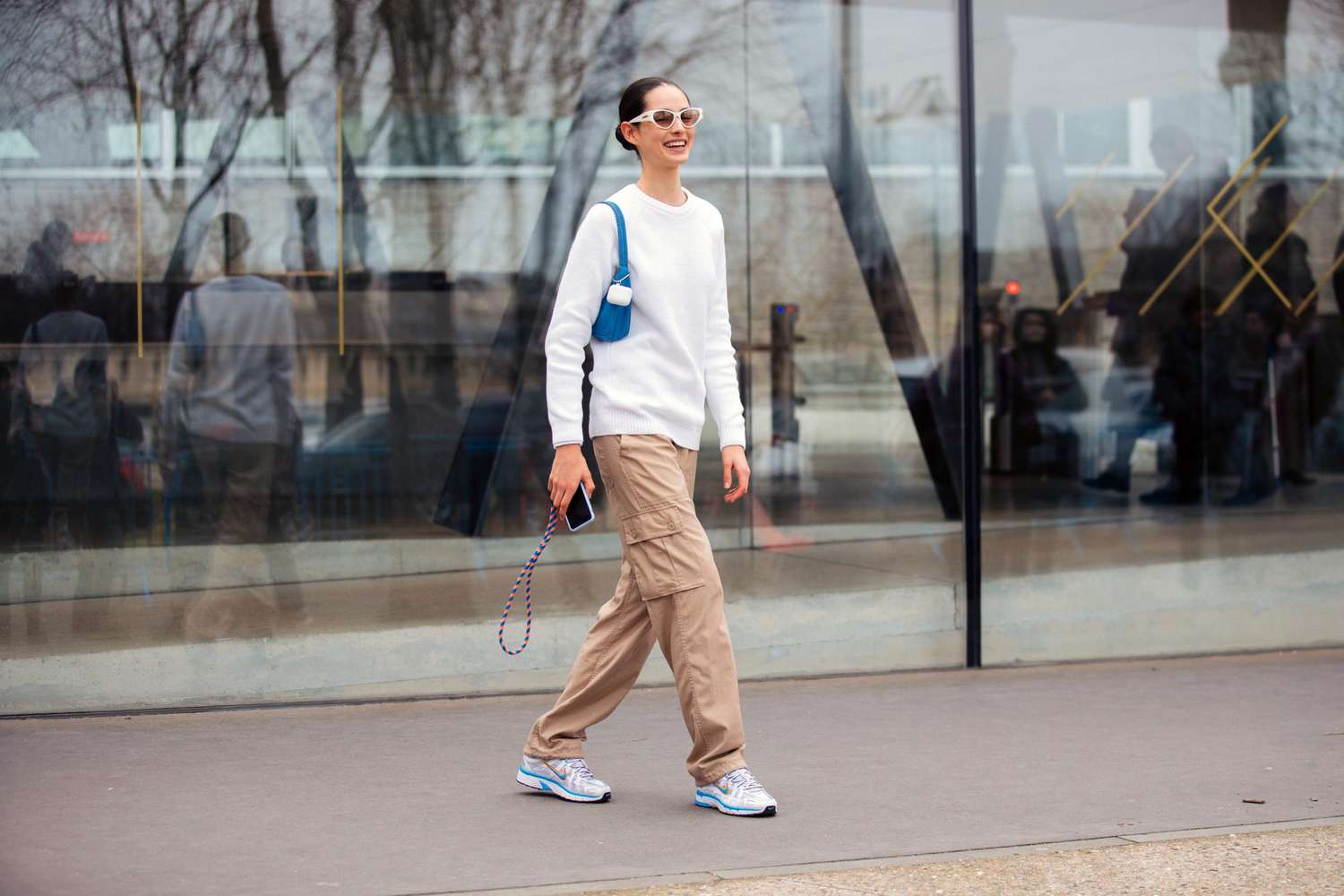Imagine standing in a fitting room, holding two pairs of jeans—one “straight,” one “slim”—and feeling totally lost. As a fashion stylist with over a decade’s experience fitting jeans for all body types, I’ve helped countless clients navigate this denim dilemma. If you’ve ever felt overwhelmed by jean fits, you’re in the right place—I’m here to clarify slim versus straight jeans so you can find your perfect pair with confidence.
- Learn the real differences between straight, slim, and skinny jeans—including fit, comfort, and style impact.
- Understand jean terminology, measurements, and how brands vary in their definitions.
- Discover which fits flatter different body types, and get expert style and care tips for each.
- See side-by-side comparisons, decision guides, and actionable outfit advice for making the right choice.
Understanding Jean Fits: The Basics
When helping clients decode jean terminology, I prioritize simplicity. Instead of throwing around jargon, I ask how they want jeans to feel—loose, fitted, roomy, or sleek. Fits are categorized by the way jeans hug or drape from the waist, seat, thigh, knee, and leg opening—each area affects comfort and appearance.
Most fits—like straight, slim, skinny—are defined by measurements at these points. Knowing your target feel helps you focus not on confusing labels, but on how each area interacts with your body. Demystifying denim terms is my specialty, and I’ll walk you through the anatomy—and lingo—of jeans.
The History and Evolution of Jean Fits
Jeans originated as rugged workwear and evolved through countless fashion cycles. From Levi Strauss’s 19th-century riveted designs to bold ‘90s baggy looks, fit trends have come and gone—but straight and slim jeans have endured, reinvented for new generations time and again.
In my styling career, I’ve watched denim swing from extreme skinnies to wide-legs, and back. Straight and slim fits persist because they flatter most body types and strike a balance between comfort and style.
- 1873: Levi Strauss & Co. patents blue jeans—originally loose, functional fits.
- 1950s: Denim becomes youth fashion—straight legs dominate.
- 1970s–80s: Denim tightens—early “slim” and “skinny” fits enter mass market.
- 2000s: Skinny jeans become a global fashion meme—popular with both men & women.
- 2010s–Now: Wider variety returns—straight, slim, hybrid fits all offered.
What Do Different Pant Fits Mean?
As a denim stylist, I’ve helped clients navigate wildly different fit terminology between brands. “Slim” at one store can mean “skinny” at another; “straight” may be baggier or barely tapered. My approach: break down descriptions by actual seat and leg width, not just the label.
The basic spectrum runs from the tightest (skinny), to slim, slim-straight, straight, relaxed, and loose. The fit descriptions are shaped by specific measurements at the seat and leg, and proportions from hip to ankle. Consistency varies by brand, so always check a brand’s fit guide if available.
Key Differences Between Straight and Slim Jeans
The main difference between straight and slim jeans lies in silhouette and taper. Straight jeans run the same width from knee to hem, creating a classic, uniform line. Slim jeans are narrower through the thigh and taper toward the ankle, presenting a more streamlined, modern look.
When working with clients, I point out two key measurements: the leg opening and thigh width. A true straight fit keeps these almost equal, while a slim fit’s leg opening is visibly narrower than the thigh.
Rise (the height from crotch to waistband) is usually similar between both, but slim fits may skew to slightly lower rises for added modernity. Looking at the jeans’ silhouette from hip to ankle is the surest test.
Comparing Silhouettes Side by Side
When fitting clients, I use the “three-view” technique: front, side, and back. Straight jeans look classic and vertical from every angle, while slim jeans visibly narrow at the calf and ankle—especially from the side view.
I always show clients the difference in silhouette—with the same person wearing both fits—to help them see how the line changes their proportions and overall vibe.
Comfort and Mobility Considerations
I always tell clients: jeans should move with you—not against you. Straight fits offer more room through the thigh and calf, ideal for those wanting extra mobility, or wearing heavier jeggings or stretch denim. Slim jeans, while more fitted, have become more comfortable with modern stretch fabrics.
My standard “sit test” ensures the waistband doesn’t bite and fabric doesn’t pull—bending, crouching, and walking all matter. Don’t just stand up straight; wear them as you live!
- Bend down to tie shoes—do jeans pull?
- Sit cross-legged—any waistband discomfort?
- Walk briskly—feel resistance?
- Raise knee (as if climbing stairs)—room to move?
- Squat—thighs and knees flexible?
What Are Straight Jeans?
When clients ask “what are straight jeans?”, I explain: these are jeans with the same width from the knee to the hem, creating a classic, vertical leg line. They aren’t baggy, but they’re never tight—making them one of the most versatile fits out there.
Many clients who resisted “skinny” jeans find straight fits a welcome alternative, especially for men seeking comfortable everyday wear. If you want jeans that work with most footwear and don’t exaggerate your leg shape, straight fits are ideal.
Characteristics and Measurements
True straight jeans follow a measurable formula: the leg opening is nearly equal to the width at the knee and thigh. I look for less than a one-inch difference between these points, and the outseam drops vertically from hip to hem.
My trick for the rack? Fold the jeans at the knee—if the hem matches the knee exactly, you’ve got a straight fit.
- Thigh to knee ratio: 1:1
- Knee to hem ratio: 1:1
- Leg opening (men’s): typically 15–17”
- Even silhouette—visible on a flat lay
Who Should Wear Straight Jeans?
I recommend straight jeans for clients seeking classic style, extra comfort, or a universally flattering fit. They suit broader hips, athletic builds, and anyone wanting to balance out their frame. Many men switching from baggier fits love the modern, yet forgiving straight silhouette.
Success story: a client who struggled with tight thighs found confidence in straight jeans, experiencing more comfort and a slimmer visual profile without feeling constricted. Straight fits are also popular among mature clients and those wanting timeless style.
In my experience, straight jeans excel for those preferring versatility and a less “trendy” appearance. They pair easily with most wardrobes and shoe styles.
- Athletic & muscular thighs
- Broad hips or larger seat
- Straighter body types needing shape
- Casual or classic dressers
- Anyone wanting room to move
What Are Slim Jeans?
Slim jeans are defined by a closer fit through the thigh and taper down to a narrower ankle. Compared to both straight and skinny, they offer a fashion-forward, tailored look that isn’t extreme. I help clients see slim as a “modern baseline”—they fit close without clinging.
Over years styling denim, slim jeans have remained popular for their ability to flatter without restricting movement. If you want a sleeker silhouette but aren’t ready for full-on skinny jeans, slim fit is the sweet spot.
Characteristics and Measurements
For slim fits, I look for a significant taper: knee and thigh are wider than the ankle by up to 2–3 inches. Proportion is key—slim jeans are snug but wearable, with enough room through the hip to avoid pulling.
My measuring points for clients: measure thigh at widest, knee at bend, and ankle at hem—ratios of 1.2:1 or greater signal true slim fit.
- Thigh to knee: ~1.2:1
- Knee to hem: ~1.2:1 (taper increases below the knee)
- Leg opening (men’s): typically 13–15”
- Tapered silhouette—visible when laid flat
Who Should Wear Slim Jeans?
Slim jeans work best for men with average or slender legs, and those after a more contemporary, tailored appearance. I’ve watched many clients “level up” their style confidence once they find a slim fit that flatters and feels good.
Clients who felt lost in looser jeans—or who wanted a cleaner break with dress shoes or sneakers—find slim fits ideal. Younger customers and trend-conscious dressers especially favor this style, but it’s not limited by age.
My experience: those who crave a sharper silhouette, like layering with jackets, or want to show off stylish footwear love slim jeans. They translate easily from casual to dressier occasions.
- Lean or athletic builds
- Men with straight, thin, or proportional legs
- Modern dressers seeking versatility
- Clients who want to “dress up” denim looks
- Anyone wanting to slim the profile visually
Slim Straight vs Slim: Decoding the Hybrid
One fit I’m asked about constantly: “Slim straight” vs “slim.” This hybrid marries elements of both, offering a trim fit through the thigh and a subtle, less aggressive taper from knee to hem. It lands between classic straight and modern slim.
I recommend slim straight jeans for clients who find standard straight too loose, but slim a bit restricting. Many “goldilocks” transformations happen right here—especially for those with athletic builds or anyone in between sizes.
- Want a cleaner look than straight, but don’t like a tight ankle
- Prefer new jeans to work with boots and sneakers
- Have thighs that are slightly muscular, but not bulky
- Need a middle ground for comfort and style
When to Choose Slim Straight Jeans
During consultations, I ask clients if their main concern is ankle width or overall comfort. If “too tight” and “too baggy” are both an issue, slim straight is my top recommendation. It’s especially useful for those who want flexibility in styling and ease of movement.
Features like moderate thigh taper, medium leg opening, and compatibility with a range of footwear make slim straight a favorite for clients who want denim that does it all.
- Your calves feel squeezed in slim, but straight feels boxy
- You prefer a tailored look with a classic vibe
- You want the versatility to dress jeans up or down
- Your favorite shoes span boots, sneakers, and loafers
Understanding Skinny Straight Leg Jeans
“Skinny straight” leg jeans are another hybrid—blending the fitted seat/thigh of skinny jeans with a just-barely-straight lower leg. I recommend these for clients who like the slim look but don’t want ankle-hugging tightness, or who want modern style with a touch more comfort.
Perfect for men with slender legs or those transitioning out of skinny jeans but not ready for full straight. I help clients visualize the difference by comparing how each silhouette frames the ankle and shoe.
Straight Fit vs Slim Fit: Making Your Decision
I guide clients through a decision framework to weigh straight fit vs slim fit: which matters more—mobility, silhouette, or versatility? Ask yourself: Do you want everyday roominess (straight)? Or a sharper, tailored look (slim)?
My advice for the truly undecided: try both in the same size, in front of a mirror. Move, sit, check reflection from all angles. Consider your wardrobe and the shoes you most often wear.
Look for bunching, pulling, or gaps. Ultimately, choose the fit that blends comfort, confidence, and compatibility with your lifestyle.
Body Type Considerations
There’s no “one size fits all” for denim. In fittings, I look for balance and proportion—straight jeans visually even out thicker thighs, while slim jeans elongate lean legs. Common fit issues include tight seats, gapping waists, or too much calf squeeze (slim), and loss of definition (straight).
My “proportion balancing” tip: pair fit to your largest lower-body area, then tailor the rest if needed. For short men, a slight taper can add height; tall men can rock either fit, though straight often suits longer legs.
Ultimately, your comfort, not a label, wins.
- Athletic thighs—straight or slim straight
- Lean legs—slim or skinny straight
- Thicker calves—straight or slim straight preferred
- Short build—slim helps elongate
- Very tall—straight (but slim works)
Style Preferences and Occasions
Think about your routine: are you dressing for creative office days, daily errands, or dinners out? I help clients select fits to integrate seamlessly with their wardrobe and the tone of their lifestyle.
For work, opt for darker-wash straight jeans paired with a blazer. For weekends, try slim jeans with a hoodie and sneakers. Professional dressers tend to prefer clean, slim lines, while those favoring comfort prioritize straight. My approach: build for versatility by owning both if possible.
| Occasion | Straight Jeans | Slim Jeans |
|---|---|---|
| Work/Smart Casual | ✓ | ✓ |
| Casual/Weekend | ✓ | ✓ |
| Night Out | ✓ | ✓✓ (sharp look) |
| Travel/Comfort | ✓✓ (extra mobility) | ✓ |
| Boots & Dress Shoes | ✓✓ | ✓ |
| Sneakers | ✓ | ✓✓ |
Styling Guide for Straight Jeans
As a stylist, my best looks with straight jeans balance classic lines and relaxed proportions—think cuffed hems, layered knits, and smart-casual jackets. A little scrunch at the ankle is okay; just keep tops fitted or semi-fitted for a sharp look.
I love straight jeans for their ability to go from laid-back to elevated with a few styling tweaks. Vary the wash and shoes for different moods and settings.
Casual Looks with Straight Jeans
Here are my go-to casual outfit formulas for straight jeans—simple, timeless, effective. Whether running errands or grabbing coffee, these always work:
- Straight jeans + white tee + denim jacket + sneakers
- Straight jeans + crewneck sweatshirt + slip-on loafers
- Straight jeans + henley shirt + boots
- Straight jeans + flannel shirt + rugged leather shoes
- Straight jeans + hoodie + minimalist trainers
Swap shoes or layering pieces based on weather and mood!
Dressing Up Straight Jeans
Dressier occasions call for darker-wash straight jeans, a crisp button-down, and a blazer or tailored jacket—the “third piece” that elevates the whole ensemble. Leather shoes or chukkas instantly smarten up the look.
Clients are amazed at how easily straight jeans move from casual to business-casual with these strategic choices.
- Unstructured blazer
- Crisp button-down
- Fine-gauge sweater (layered under jacket)
- Polished leather belt
- Dress-shoes or Chelsea boots
Styling Guide for Slim Jeans
I style slim jeans to highlight clean lines and a streamlined silhouette. Key: balance fitted jeans with shorter or tucked-in tops, or lightweight layers. Slim fits love statement footwear or cropped jackets.
My clients often achieve sharper looks with slim jeans and a little ankle or sock showing—especially with roll-cuffs or no-break hems.
Casual Looks with Slim Jeans
These five formulas make building casual outfits around slim jeans easy. The goal: proportion and cohesion—nothing bulky up top or foot heavy down low.
- Slim jeans + slim hoodie + running sneakers
- Slim jeans + graphic tee + bomber jacket + slip-on shoes
- Slim jeans + henley + minimalist trainers
- Slim jeans + half-zip sweater + chukka boots
- Slim jeans + layered t-shirt + denim overshirt + brogues
Dressing Up Slim Jeans
For professional or evening settings, I recommend slim jeans in dark wash, clean hemlines, and minimal distressing. Pair with blazers, fine knits, and sleek boots for a business-casual edge.
Details like trouser-style pockets, hidden rivets, or pressed creases make slim jeans easier to elevate.
- Cotton or wool blazer
- Turtleneck or dress shirt
- Monk-strap or Chelsea boots
- Minimalist leather sneakers (for creative offices)
- Fine accessories (belt, slim watch)
What Shoes to Wear with Different Jean Fits
Shoes anchor your look—pairing well is crucial. For straight jeans, go for chunkier footwear: work boots, loafers, brogues, or substantial sneakers. Slim jeans shine with sleeker styles: minimalist trainers, Chelsea boots, low-top sneakers, or dress shoes.
Balance the shoe’s width with the jean’s leg opening—avoid bulky shoes with slim jeans, and don’t let slim shoes make straight jeans look sloppy.
Brand Variations in Fit
Not all brands agree on what “slim” or “straight” means. From guiding clients through Levi’s to Gap or designer denim, I know some run looser, others tighter—even within the same fit name.
My “brand translation guide” helps repeat clients: Levi’s 511 “slim” is slimmer than Gap’s “slim”; designer brands can be even closer. Always check the fit guide and return policies.
| Brand | Straight Fit | Slim Fit |
|---|---|---|
| Levi’s | Classic (mostly true to name) | Lean/Tailored (runs slim) |
| Gap | Looser than average | Slimmer than straight, but roomy |
| Uniqlo | Standard straight, modern | Sleek, moderate slim |
| Wrangler | Traditional (can be wide) | Fitted when labeled slim |
| AG/Designer | Trim, more modern | Very slim, fashion-forward |
Navigating Size Inconsistencies
My method for sizing across brands: know your key measurements (waist, rise, thigh, inseam, leg opening). Check each brand’s specific size chart, and don’t rely solely on tags—try on, or order multiple sizes if buying online.
I teach clients to look for gaping at the waist, excess fabric at the thigh, and length past the shoe. Minor tailoring can achieve the perfect fit.
- Measure your best-fit jeans at home and compare
- Check rise and inseam for personal comfort
- Request garment measurements, not just “tag size”
- Use return policies on first-time purchases
- Taper or hem as needed for your ideal silhouette
Care and Maintenance Tips
Quality denim can last years with proper care. I advise clients to wash jeans rarely, inside-out, in cold water, and never tumble dry. Spot clean between washes, and hang dry to preserve fit and shape.
Use denim-specific detergents and avoid bleach. Stretch denim should be reshaped while damp to maintain taper and elasticity.
- Wash jeans inside-out in cold water
- Avoid the dryer—air dry flat
- Wash only when necessary (every 5–10 wears)
- Spot clean to extend life
- Use a denim wash bag for extra protection
Extending the Life of Your Jeans
Denim longevity is all about mindful care. Teach clients basic repairs—patching small tears, reinforcing seams, and fixing buttonholes. These can delay replacement for years. I also recommend rotating jeans and using a jean hanger for storage shape.
View quality jeans as an investment. Even small repairs—a trip to the tailor for restitching or new hardware—can keep favorites wearable.
- Fraying at pockets or hem
- Loose or missing rivets
- Crotch/thigh thinning
- Fabric losing elasticity or holding shape poorly
- Visible stains that don’t wash out
Are Skinny Jeans Still in Style?
Denim trends are cyclical. Skinny jeans peaked in the 2010s, became a meme in pop culture, and have cooled slightly as straight and relaxed fits surge in 2024. Yet in my styling sessions, skinny jeans remain popular for some age groups—especially those with slender frames, or who pair them with tall boots.
My advice: trends shift, but fit and authenticity matter most. If you love your skinny jeans, wear them confidently—Gen Z may prefer baggy, but skinnies have not left the style scene for good.
FAQ
What is the difference between slim, straight, and skinny jeans?
Skinny jeans are tightest—fitted from hip to ankle. Slim jeans have a tailored, tapered leg but remain comfortable. Straight jeans have a uniform width from knee to hem, offering a classic look without a taper.
What body types are best suited for slim jeans vs straight jeans?
Slim jeans work well for lean, straight, or moderately athletic legs. Straight jeans flatter muscular, broad, or curvy lower bodies, but can also work on slim guys who want a classic shape.
How should slim jeans fit compared to straight jeans?
Slim jeans should fit closer at the thigh, knee, and taper to the ankle—no excess fabric. Straight jeans provide a little extra room throughout and exhibit no taper from the knee down.
What should you wear slim fit jeans with vs straight jeans?
Slim jeans pair well with fitted tops, light layers, and sleek shoes. Straight jeans complement heavier footwear, structured jackets, relaxed shirts, and casual layering.
Are slim or straight jeans more flattering?
It depends on your body shape and personal style. Slim jeans elongate and create a modern look, while straight jeans offer balance and classic appeal.
What is the difference between slim and slim straight jeans?
Slim jeans have a noticeable taper from knee to ankle. Slim straight fits are slightly trimmer than straight but with minimal taper—a good hybrid fit.
How do different fabrics affect the way slim and straight jeans wear and feel?
Stretch denim adds comfort and mobility, especially to slim fits. Rigid denim offers structure and longer life, often preferred for straight fits.
Can I wear slim or straight jeans if I’m not thin?
Absolutely! Well-fitting slim or straight jeans can flatter a variety of body shapes when sized correctly.
Which style should you choose—slim or straight jeans?
Choose slim for a more modern, sharper silhouette. Opt for straight for comfort, versatility, and a timeless look.
How can you tell if your jeans are too slim or too straight for your body type?
Too slim: tight at thigh/knee, pocket pulling, uncomfortable sitting. Too straight: excessively loose, loss of waist contour, baggy appearance.
Conclusion: Making Your Final Decision
Choosing between straight and slim jeans is about style confidence, comfort, and how the fit works for your body. Don’t chase trends blindly—trust your instincts, and prioritize movement and mood over labels.
As I tell every client: your perfect jeans should feel like an extension of you. Use these insights and guides to find the fit that makes you feel your best—because the right jeans are the ones you’ll reach for again and again.



